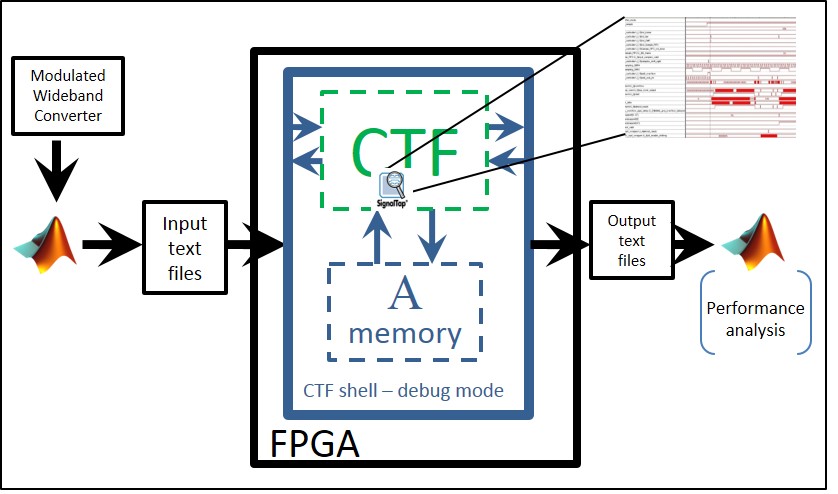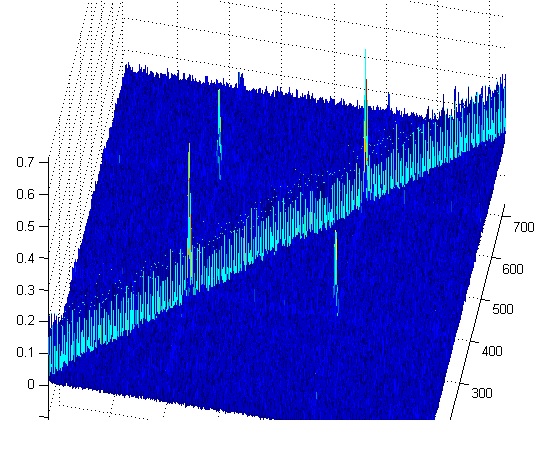
The DSP block is a system built for reconstructing the signal. The device is distributed to three data paths - the pseudo inverse of the frame matrix, the multiplication with the samples (real time reconstruction) and the support change detector. This is a customized unit for the Sub Nyquist sampling system which starts with the Wideband Analog Converter".















